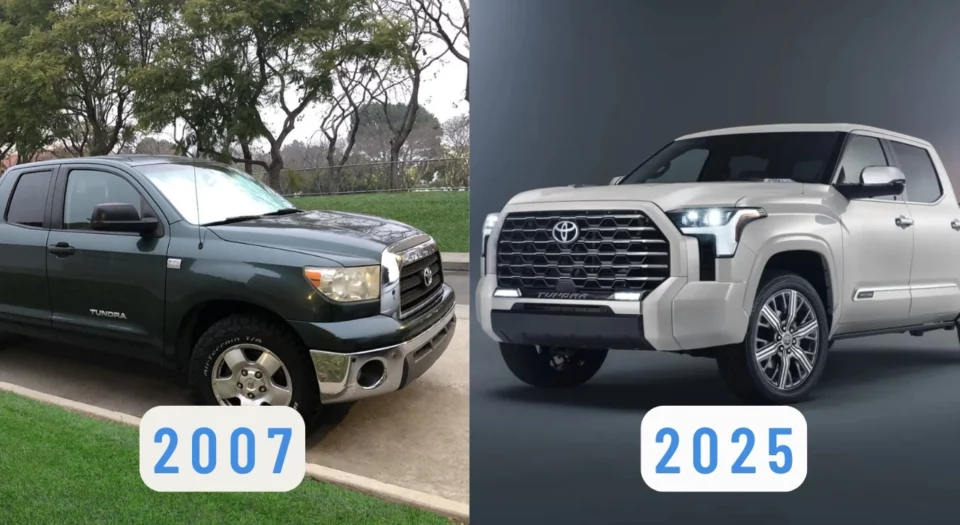Are you interested in the Toyota Tundra, but that $40,000+ price tag is making you explore the used car market? Well, you are not alone. The rising prices of cars and gas have nudged many buyers to consider older models. The good news with Tundra is that even in the pre-owned car market, you are guaranteed to find a reliable and capable model as long as you know which model years to avoid and which ones to buy.
It is a necessity as not all Tundras are built the same. Some suffer from issues like costly engine failures, excessive rust formation, suspension problems, and electrical quirks, leaving owners frustrated and broke.
To ensure you do not get drowned differentiating the good years from the bad ones with over 20 model years to explore, we bring you this comprehensive guide.
Here, we will break down exactly which Toyota Tundra years to avoid, which ones are worth your money, and what reliability issues real owners have faced. We will also discuss some real-world smart tips on how to shop for a used Tundra, what red flags to watch out for, and how to ensure the longevity of your truck.
Read on, as this guide could save you thousands and help you find a Tundra that lives up to its name.
Toyota Tundra Over The Years (2000-PRESENT)
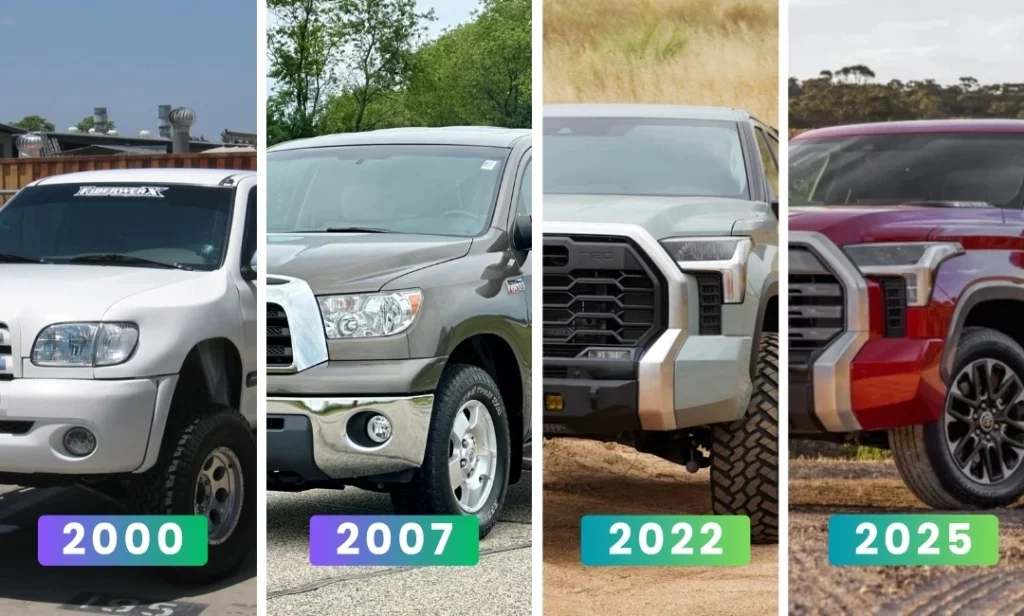
Toyota Tundra is the first Japanese truck ever to be built in North America. It is a full package of power, capability, and reliability. With impressive V6 and V8 engine options, a towing capacity of up to 12,000 pounds, and exceptional off-road features, it has been the dream of every American who wishes to own a vehicle that can be extraordinary both on and off the road.
It has been built across three generations in the last 25 years and has received several awards and distinctions from reputable sources, including MotorTrend, for its outstanding qualities.
Core Features That Define Tundra:
- Full-size pickup truck built for work and utility
- Durable body-on-frame construction
- Strong V8 engine options (until 2022 redesign)
- High towing and payload capacities across all models
- Rear-wheel drive standard with available 4WD
- Spacious interiors in all cab configurations
- Renowned Toyota reliability and longevity
- Solid safety and high build quality
- Robust resale value
- Simple, functional interior controls
- Proudly built in the USA (San Antonio, TX since 2008)
Toyota Tundra Generations Explained with Pros and Cons
The first generation of Tundra extends from 2000 to 2006, with 3.4 liter V6 and 4.7 liter V8 engines powering the models. High reliability and compact design have been the highlights.
The second generation was launched in 2007 and lasted up to 2021, featuring three impressive V8 engines. The larger body build, more power than Gen 1, and boosted standard towing capacity of up to 10,200 pounds, and the introduction of TRD off-road and TRD Pro for rugged performance gave its rivals tough competition.
Finally, the third generation made its debut in 2022 with a hybrid power option and a major redesign for gas mileage and comfort. In addition, the integration of more advanced technology, especially a bigger infotainment system (14 inches) and a digital gauge cluster, made it irresistible to truck fanatics.
| Generation & Key Specs | Pros | Cons |
| 1st Gen (2000–2006) – Engine: 3.4L V6 / 4.7L V8 (190–282 hp) – Transmission: 4AT / 5MT – RWD standard, 4WD optional – Max tow: ~7,100 lbs – Cabs: Regular, Access | – Reliable – Smooth ride – Strong V8 – Easier to park | – Smaller than rivals – Basic interior – Lower towing – Few trim options |
| 2nd Gen (2007–2021) – Engine: 4.0L V6 / 4.6L & 5.7L V8 (236–381 hp) – Transmission: 5AT / 6AT – RWD standard, 4WD optional – Max tow: 10,200 lbs – Cabs: Regular, Double, CrewMax | – Strong engines – High towing – Spacious interior – Reliable | – Bulky size – Poor MPG – Dated late interior – Firm ride unloaded |
| 3rd Gen (2022–Present) – Engine: 3.5L TT V6 / Hybrid (389–437 hp) – Transmission: 10AT – RWD standard, 4WD optional – Max tow: 12,000 lbs – Cabs: Double, CrewMax – Coil-spring rear suspension | – Modern engines – Hybrid available – Improved interior & tech – Smoother ride | – No V8 – Early reliability concerns – Higher price – Complex infotainment |
5 Toyota Tundra Years Every Buyer Should Avoid
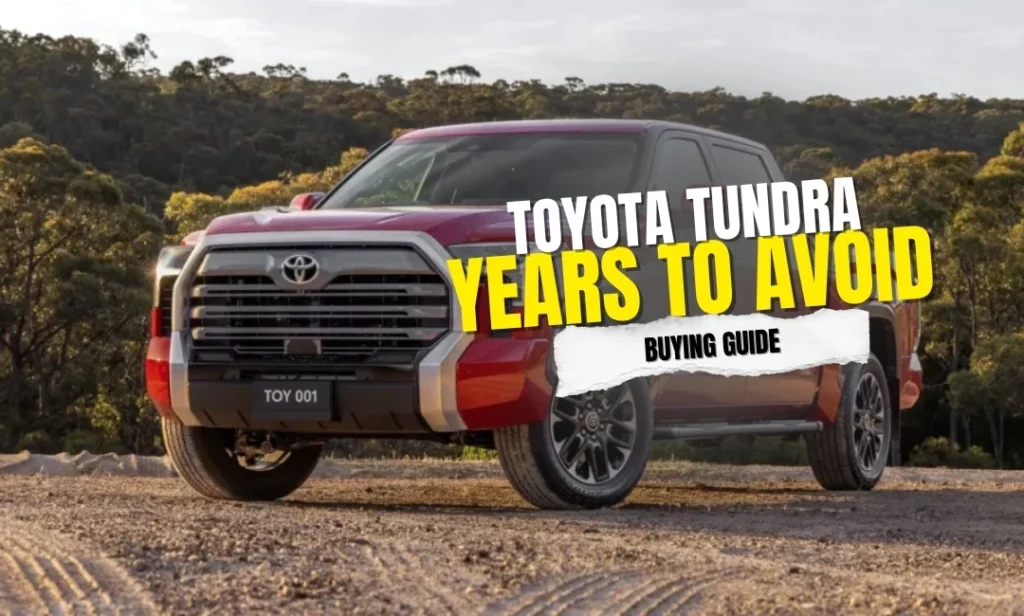
The Tundra lineup from Toyota is an exceptional truck that can tackle both every day driving requirements and weekend adventure spirits without breaking a sweat.
However, the model years 2005, 2007, 2008, 2010, and 2012 are designated words years of Tundra. As per the National Highway Traffic Safety Administration (NHTSA) database, these models have brought misery and recurring mechanical and reliability problems for their owners, leading to severe safety issues, costly repairs, and massive headaches.
To tackle the rising problems and dissatisfaction of Tundra owners, Toyota issued several recalls and technical service bulletins whose extensive list you can explore here. While this dedication of the brand did help tackle the situations a bit, these years, especially the second generation, remained a thorn in Tundra’s legacy.
1. 2005 Toyota Tundra
The 2005 Tundra might seem like a solid choice from the first generation, but a lot of its owners ran into big issues, out of which frame rust was the most prominent one. In some cases, the rust got so bad that it literally ate through the frame. What’s worse was that Toyota’s support didn’t always cover it. There were also issues with the lower ball joints of the front suspension, leading to steering issues and even a recall. The worn-out brakes, oxygen sensor failures, and cracking dashboards just added more hassle than it was worth.
Major Issues To Watch Out For:
- Severe frame rust, especially in snowy regions
- Lower ball joint failure (recall issued)
- Oxygen sensor and catalytic converter issues
- Premature brake wear
- Cracked dashboards and interior trim aging
2. 2007 Toyota Tundra
2007 kicked off a new generation for Tundra. It featured more power and size but came with its fair share of headaches. A lot of owners dealt with serious frame rust, especially the ones living in areas with snow and salt. One user even mentioned how their truck became unsafe to drive due to how quickly the frame deteriorated. Others reported a torque converter shudder mainly around the speed of 35 to 40 mph. The more annoying part was Toyota’s fix did not always hold up. Some models even suffered from steering and suspension wear, plus engine problems like camshaft failures. With a total of 10 recalls and 2 bulletins, this one is not the best year to buy a used model.
Major Issues To Watch Out For:
- Frame rust and corrosion concerns
- Camshaft and engine component failures
- Steering and suspension wear
- Recalls for driveshaft, airbags, and power window switch
- TSBs for torque converter shudder and transmission quirks
3. 2008 Toyota Tundra
This year’s release might seem like a safer bet than the sloppy 2007 model, but it still had enough problems to land it among the top Tundra years to avoid. One of the biggest complaints the owners registered was regarding transmission shudder, especially at low speeds, annoying many owners and leading to multiple service bulletins. The large 5.7L V8 engine was the highlight, but all it delivered were camshaft failures and oxygen sensor problems. Add in frame rust and a recall for stuck accelerator pedals; you are looking at a model that could easily cost you thousands of dollars in repairs.
Major Issues To Watch Out For:
- Transmission shudders around 30–40 mph
- Camshaft and oxygen sensor failures
- Frame rust in cold-weather regions
- Accelerator pedal recall (floor mat interference)
- Multiple TSBs for drivetrain and shifting issues
4. 2010 Toyota Tundra
This release didn’t fix everything from earlier years. To make matters worse, it came with its own set of problems. Toyota did make some updates, but issues like airbag failures and brake problems keep it high in the worst years category. There were recalls for faulty curtain airbags (that could randomly deploy) and brake master cylinder leaks, which made stopping the car unpredictable for some drivers. Owners also reported engine stalling, bad distributor, and occasional electrical annoyances like faulty sensors and warning lights.
Major Issues To Watch Out For:
- Random airbag deployment (recall issued)
- The brake master cylinder leaks
- Occasional engine stalling
- Faulty sensors and warning lights
- Multiple recalls for safety-related issues
5. 2012 Toyota Tundra
Another Model year that looked solid on the outside but had some sneaky issues that made the ownership experience frustrating for several buyers. One of the biggest complaints was related to airbags, mainly incomplete deployments or warning light malfunctions, which even led to a recall. Some people also reported problems with the brake system, like soft pedals or premature wear. There were several reports of navigation and infotainment glitches, starter problems, and the occasional check engine light going crazy.
Major Issues To Watch Out For:
- Airbag system malfunctions (recall issued)
- Brake pedal softness and premature wear
- Starter and ignition coil and switch problems
- Infotainment and navigation system glitches
Top 6 Reliability Issues Tundra Owners Can Expect
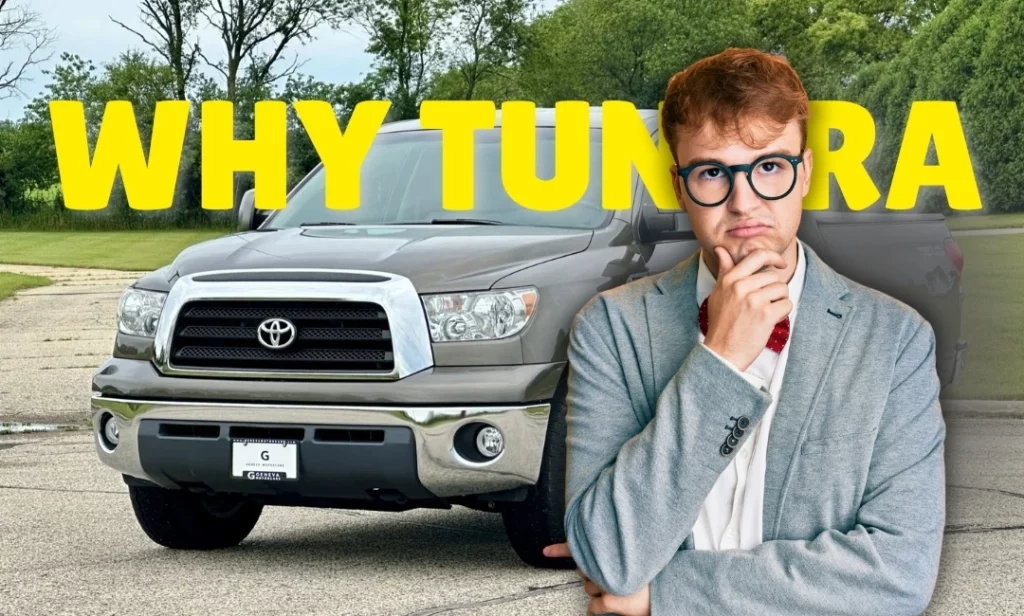
Toyota Tundra is often praised for its toughness despite having troubled years. While others years were better, they were still prone to recurring reliability problems. Here are the six most frustrating issues that have affected Tundra owners over the years and may linger over other years from similar generations.
Severe Frame Rust
In several first and second-generation Tundras, the body frame rusted faster than it should have. In some cases, it was to a point where several trucks were declared unsafe to drive. Toyota launched a service campaign to inspect and coat or replace affected frames, but not across all years and regions.
Lower Ball Joint Failures
Earlier models came equipped with poorly manufactured lower ball joints that wore out fast, leading to loose steering and even complete separation of the front suspension.
Transmission Shudder/Failure
Many owners reported transmission vibration or shuddering at lower speeds, leading to complete failure in some cases. The torque converter issues were the culprit and often required a full torque converter replacement.
Brake System Problems
Tundra brake systems have been the worst with their master cylinder leaks, spongy pedals, and others. Some 2010 to 2012 owners reported reduced stopping power or total brake fade.
Air Injection Pump Failure
There were numerous complaints about the faulty air injection pump, affecting 11 model years of Tundra. Replacing the air injection pump or the emission control valve was the only solution, putting financial strain on the owners.
Toyota Tundra Major Repair Costs Then vs 2025
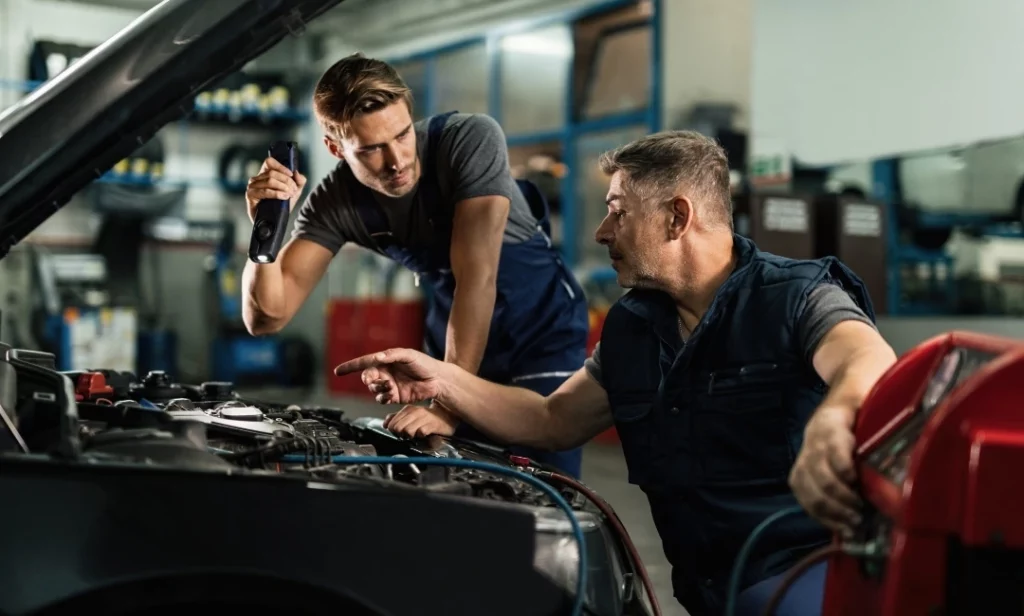
Learning about the best and worst years of Tundra trucks is crucial for you because it will affect your spending down the road. Poor models will frequently ask for professional car services, which come with hefty repair costs. Surely, you can find bad year releases for a cheaper cost upfront. But with time, you will be spending more than you bargained for.
Here is a table comparing the average repair costs for major Toyota Tundra issues at the time they occurred versus estimates for 2025.
| Issue | Original Avg. Cost | Estimated 2025 Cost |
| Frame Rust Repair | $3,000–$5,000 | $10,000–$15,000 |
| Lower Ball Joint Replacement | $434–$796 | $800–$1,100 |
| Torque Converter Replacement | $1,200–$1,500 | $1,500–$2,000 |
| Airbag System Repairs | $633–$684 | $700–$900 |
| Brake Master Cylinder Replacement | $615–$754 | $700–$850 |
| Oxygen Sensor Replacement | $413–$469 | $450–$550 |
Toyota Tundra Best Years to Buy for Long-Term Reliability
After struggling with problematic releases for over a decade, Toyota has finally gotten the Tundra right. The best years of this pickup offer robust engines, low maintenance costs, and a level of reliability that rivals of Ford and Ram struggle to match. You can buy any of these years with the confidence that they will still be with you 10+ years down the line.
1. 2009 Toyota Tundra
This one is a quiet workhorse and one of the most dependable Tundra model years out there. Toyota managed to iron out most of the bugs from the 2007 redesign, resulting in fewer complaints about drivetrain or electrical issues. The V8 engine is as potent as ever, with maintenance (from engine oil change to oil filter replacement and more) to be low-cost and predictable. Compared to the same-year Ford F-150 or Chevy Silverado, the 2009 Tundra simply holds up better over time.
2. 2013 Toyota Tundra
2013 was the final year for the first-generation compact body style. By this year, Toyota has perfected the truck, boasting a drive-it-forever attitude. One owner on an online forum mentioned how they have been driving their 2013 model past 230,000 miles with no big repairs. You may find its interior dated, but if it offers unshaken reliability, I do not think there should be any problem. This one is a great purchase if you want rugged dependability with minimal risk.
3. 2015 Toyota Tundra
In this particular year, Toyota offered its best: durability over flash. There is no turbocharging and no gimmicky transmissions. Just an enormous and time-tested 5.7L V8 and a traditional 6-speed automatic transmission. Trucks from this year excel at towing and long-distance driving comfort. What’s even more important is that they do not suffer from the engine or electrical issues seen in the same-year Rams and Fords. This one is a safe bet as it will keep on working as long as you take good care of it.
4. 2018-2019 Toyota Tundra
My personal favorite picks for Tundra are the model years ranging from 2018 to 2019. These two years offer modern safety and convenience features without sacrificing long-term durability. Toyota finally added its Safety Sense package in 2018. There aren’t any major changes to the engine and drivetrain. This smart move offered buyers a truck that holds up like the old-school Tundras but drives like a modern everyday driver. What I liked the most about these years is how Toyota kept things refreshingly simple and reliable when its competitors were busy experimenting with new tech or complicated suspensions.
5. 2021-2025 Toyota Tundra
The second generation ended in 2021, giving a proper farewell to the classic Toyota truck, ideal for buyers seeking simplicity at its best. In 2022, Toyota introduced a fully redesigned Tundra with a twin-turbo V6 and hybrid options, continuing to the present day. These three years boast potent engines with no drama and fewer electronics to worry about. As per the early feedback from customers that I came across, these years seem quite promising. The better mechanical and tech features make them highly reliable.
Smart Tips For Buying a Tundra In The Used Car Market
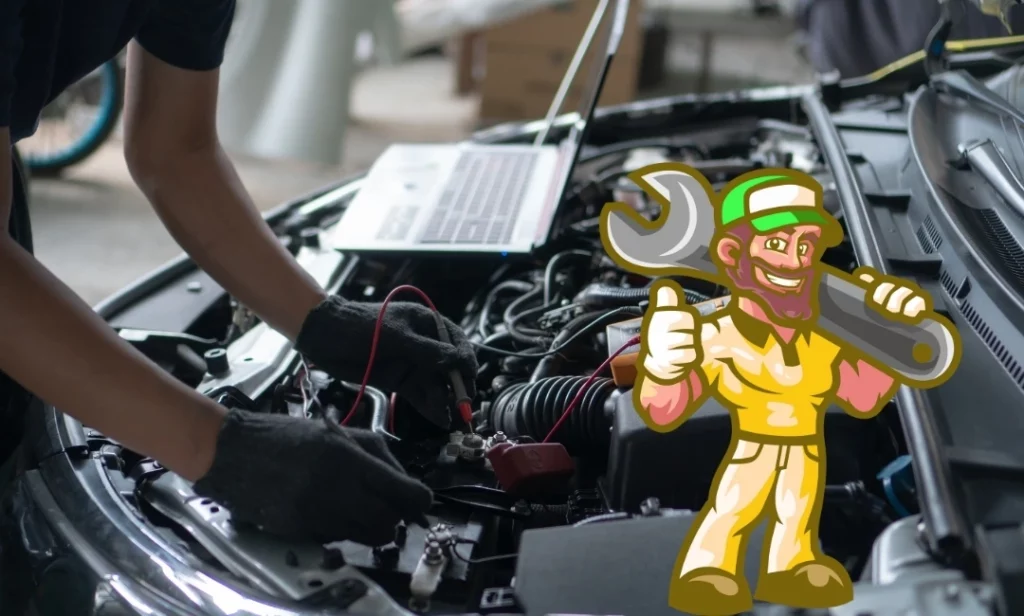
If upfront cost is a major issue for you, buying a used Tundra is a great decision. To ensure you avoid the common pitfalls associated with pre-owned cars, here is a quick guide to help you.
Know the Good and Bad Years
Choose from reliable years like 2013, 2015, and 2018–2019. Avoid risky ones like 2007, 2008, and 2010 unless they are fully repaired.
Check the Frame for Rust
Aggressive rusting is a prominent issue, especially on the older models. So, take a closer look underneath or get a mechanic to do it for you. Even a slight presence is a dealbreaker.
Run the VIN Report
Use tools like Carfax or websites like NHTSA to check for the accidents, recalls, and service history of the vehicle.
Test for Common Issues
Ask for a test drive, and during it, watch for common issues like transmission shudder, soft brakes, warning lights, and clunky steering. Walk away at the first sight of any of these issues.
Say No To Modified Trucks
Engine tuning, lift jobs, and aftermarket parts integration may seem cool, but they void warranties and introduce even bigger reliability concerns. So, avoid them at any cost.
Get a Pre-Purchase Inspection
Always have a trusted mechanic inspect the vehicle thoroughly before the purchase. A professional can easily spot hidden issues, saving you from bigger troubles in the future.
Prefer Certified Rides
Certified pre-owned vehicles are pricey compared to the generic ones, but they offer peace of mind with warranty coverage worth every penny.
Consider Off-Leases
If you want the latest releases, especially from the third generation, consider exploring off-lease models. They are under warranty, well-maintained, and are much cheaper than their all-new counterparts.
Opt For Dealerships
Car dealerships are better than private sellers, whether you are leasing or buying. They offer security, warranty, and peace of mind that you can rarely get with private entities or individuals.
Conclusion
Toyota Tundra is a strong contender in the American pickup segment, even with the problems linked with it. While it is the epitome of reliability, you should always keep your distance from its bad years and focus on the good ones.
While the troubled years can not only exhaust you mentally but financially as well, the reliable years ensure smooth sailing, but little to no hiccups on the ownership path. The pre-owned or used car market is your safest bet if money is the issue. Follow our real-world tips, and you will be a proud owner of a truck that you will cherish for years to come.

